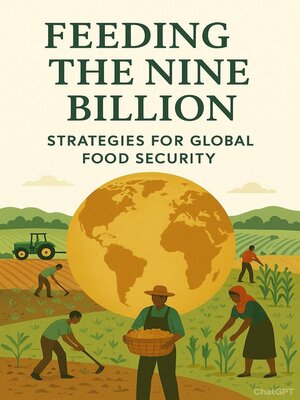
Sign up to save your library
With an OverDrive account, you can save your favorite libraries for at-a-glance information about availability. Find out more about OverDrive accounts.
Find this title in Libby, the library reading app by OverDrive.



Search for a digital library with this title
Title found at these libraries:
| Library Name | Distance |
|---|---|
| Loading... |
Feeding the Nine Billion: Strategies for Global Food Security is a clear, practical, and hopeful roadmap for ensuring that every person can access nutritious food in a warming, crowded, and rapidly changing world. Written in simple, bookish language and grounded in real-world experience, it moves from the scale of a single farm to global markets and institutions, showing how the pieces fit together to create resilient, fair, and nourishing food systems. It opens with the central challenge—feeding a projected nine billion people—by unpacking what food security truly means: not only producing enough calories, but guaranteeing equitable access and balanced diets that support health, dignity, and opportunity.
The book surveys the current landscape of hunger and malnutrition, explaining why people go hungry even when the world grows enough food. It explores how conflict, climate shocks, poverty, weak infrastructure, and inequality disrupt access to meals, and it highlights the quiet crisis of hidden hunger—micronutrient deficiencies that limit learning, productivity, and well-being. With this foundation, the narrative turns to solutions that work on the ground: sustainable agriculture practices that build living soils, conserve water, reduce waste, and weave biodiversity into the heart of farming; and innovations in crop science, breeding, and biotechnology that add resilience to heat, drought, pests, and disease while improving taste, nutrition, and storage life.
Beyond the farm, the book shows how technology and data strengthen judgment—helping farmers and food businesses use timely, local information to decide when to plant, irrigate, store, transport, and sell. It addresses the hidden losses from field to fork and offers practical fixes across harvesting, cold chains, packaging, and household habits. The economics of food security is explained in accessible terms: how fair prices, rural roads, storage, transparent markets, and rules-based trade stabilize both farmer incomes and consumer budgets, and how small and medium enterprises in processing and logistics can keep value closer to where food is grown.
Policies and governance receive a full, pragmatic treatment: land and water rights, smart public investment, nutrition-sensitive safety nets, food safety systems, and early warning mechanisms that protect lives and livelihoods during shocks. The book gives special attention to conflict and migration, describing how to safeguard food access, restore livelihoods, and maintain social cohesion when people are on the move or living through crisis. It elevates the quiet power of community solutions—cooperatives, seed banks, water user groups, kitchens, markets, and grain banks—that translate big ideas into everyday practice.
The final chapters tie these threads together in a comprehensive vision of resilience: diverse farms, climate-wise water and soil care, robust storage and logistics, fair and flexible markets, inclusive institutions, and finance that rewards preparation. Above all, the book insists that equity and nutrition sit at the center of success: women, youth, and marginalized workers must be included; diets must be varied and affordable; and waste must be cut at every step. Feeding the Nine Billion is both an invitation and a plan—actionable, empathetic, and forward-looking—showing how steady, shared effort can turn a daunting challenge into a global achievement.







